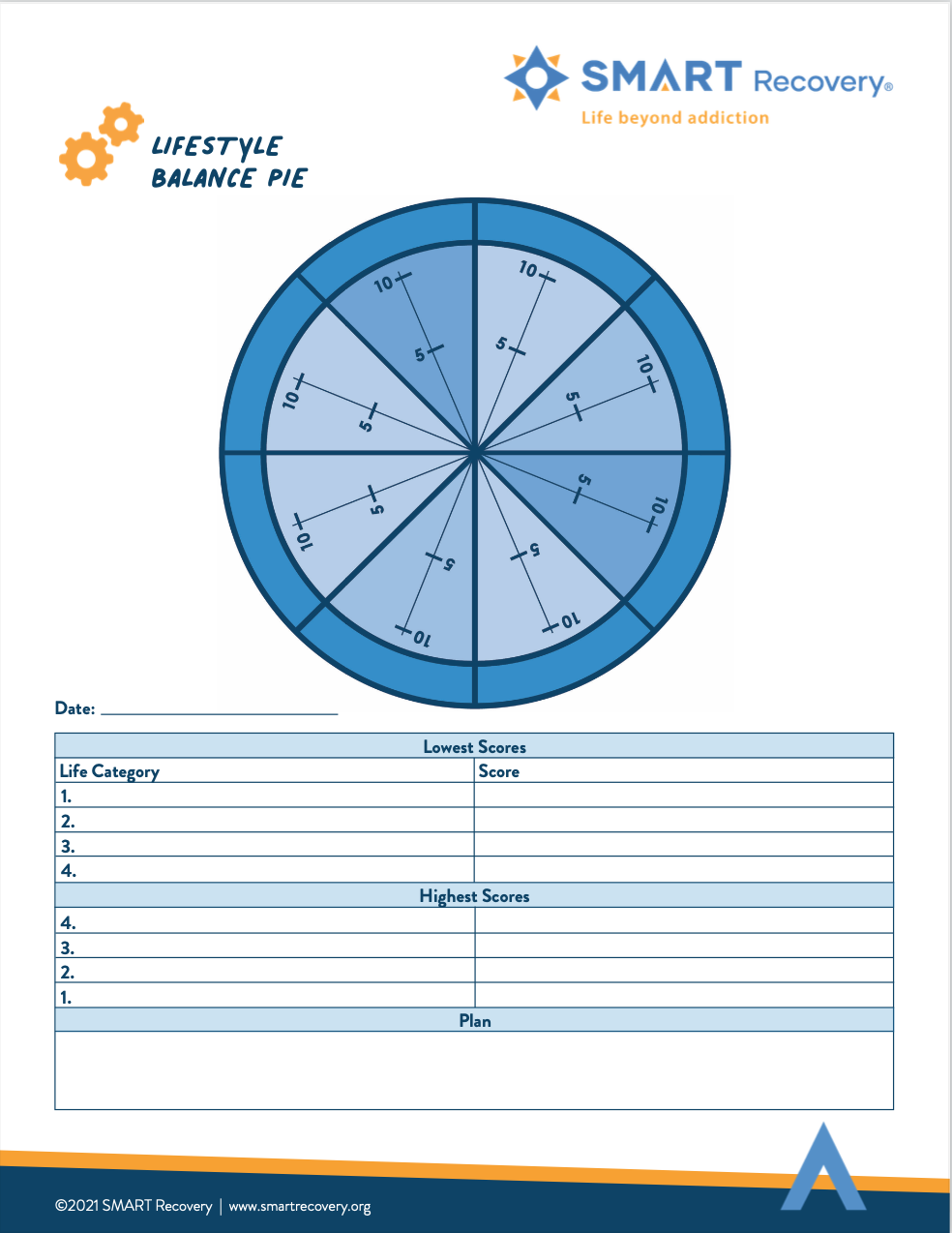Point 4
When to use this tool: Regaining health and creating a lifestyle that brings long- and short-term satisfaction is an important part of recovery. Avoiding lapses and relapses, and achieving long-term behavior change is supported by living a balanced life. Balance comes from finding and pursuing interests that you find absorbing, and achieving both short- and long-term goals.
Example of its use in a SMART meeting: DRAW a large circle on the flipchart and then say to the participants: You can do the Lifestyle Balance Pie exercise at home. You use this with your Hierarchy of Values. Let’s say this circle represents your life. Thinking of your life as a pie, divide it into as many slices as you have values, then label each piece with one of your values from your Hierarchy of Values. For the purposes of discussion, we’ll just divide the pie into 3 slices to represent the following areas of life values:
- Self-maintenance: The things you do to maintain yourself — work, shopping, cooking, etc.
- Self-development: The activities you do to educate or challenge yourself.
- Fun: The activities you do to relax and enjoy yourself with family and friends.
Divide the circle into three sections, and label with self-maintenance, self-development, and fun, and explain what activities might go in each section.
Within each slice, draw another line as a ruler and say:
- Think of the pie’s outer edge as being completely satisfied (10) and the center as being totally dissatisfied (0).
Ask the group members:
- Think about how you would rate your level of satisfaction in each of these areas?
- Would anyone be willing to share theirs as an example to use for the group?
After completing the rating for each section, connect the dots to create a new outside perimeter and discuss the results:
- What does the life pie look like? Is it round and full, and ready to put on the table for everyone to see? Or does it look like there have been bites taken out of it?
- Think of it as being the tires on your car. What would the ride be like? Would it roll along smoothly and effortlessly? Or would it be rough and bumpy?
- When looking at your lifestyle balance pie, ask yourself (and answer) the following questions:
- Am I living a balanced life?
- Are my true values and priorities reflected here?
- If I had one month left to live, is this the way I would be spending my time?
- Am I involved in too many activities? Is there too much on my plate?
- How much of my time is spent caring for others? For myself?
- Are there areas of my life that need more of my attention?
- Is there a dream or desire that keeps being put off that I’d like to focus on?
- What area(s) needs more attention? Where is less attention needed?
- What changes do I want to make? What can I do to “round out” my life?
To move toward a more balanced life, provide more time for those pieces missing from your pie. Focus on the complete picture of your life, not just specific areas. “Living a balanced life” is all about the complete picture.
Helpful Links
- Public-Facing Toolbox Page: www.smartrecovery.org/lifestyle-balance-pie
- Updated Tool PDF (03/2021): https://www.smartrecovery.org/wp-content/uploads/2021/03/LBP-113-updated.pdf


